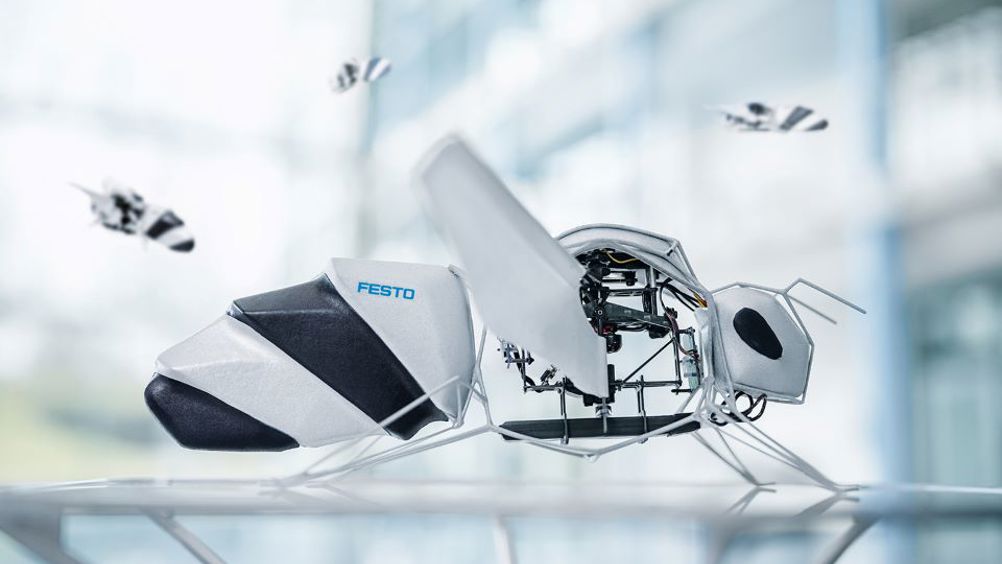Video of the week: BionicBee creates a buzz at Festo
This week’s video comes from the Bionic Learning Network at Festo which has used generative design to create an autonomous swarming robotic bee.

Showcased at Hannover Messe 2024, the 34g BionicBee is the smallest flying object created by the Bionic Learning Network to date at 220mm long and a wingspan of 240mm.
The bee’s autonomy is enabled by an indoor locating system with ultra-wideband (UWB) technology where eight UWB anchors have been installed on two levels for accurate time measurement, allowing the bees to locate themselves in the space.
According to Festo, the UWB anchors send signals to the individual bees, which can independently measure the distances to the respective transmitting elements and calculate their own position in the space using time stamps.
To fly in a swarm, the bees follow the paths specified by a central computer. Festo added that flight planning includes ‘possible mutual interaction through air turbulence’.
As each bee is handmade minor manufacturing differences can influence the bee’s flight behaviour, which an automatic calibration function takes into account. After a short test flight, each bee determines its individually optimised controller parameters. An algorithm calculates the hardware differences between the individual bees, allowing the swarm to be controlled from outside as if they were all identical.
Register now to continue reading
Thanks for visiting The Engineer. You’ve now reached your monthly limit of news stories. Register for free to unlock unlimited access to all of our news coverage, as well as premium content including opinion, in-depth features and special reports.
Benefits of registering
-
In-depth insights and coverage of key emerging trends
-
Unrestricted access to special reports throughout the year
-
Daily technology news delivered straight to your inbox










Water Sector Talent Exodus Could Cripple The Sector
Maybe if things are essential for the running of a country and we want to pay a fair price we should be running these utilities on a not for profit...